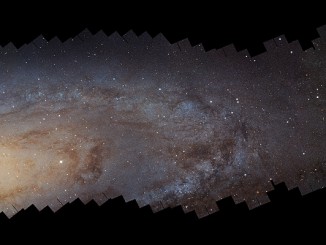
Young red dwarf stars are among the most common in the galaxy, hosting numerous exoplanets that could be abodes for life. But red dwarf stars also produce powerful superflares, extreme bursts of radiation that would wreak havoc with exoplanet atmospheres, possibly preventing life as we know it from gaining a foothold.
But maybe not.
Based on observations from NASA’s Transiting Exoplanet Survey Satellite, or TESS, researchers at the Leibniz Institute for Astrophysics in Potsdam, working with astronomers in the United States and Spain, were able to track down where such superflares originate.
“We discovered that extremely large flares are launched from near the poles of red dwarf stars, rather than from their equator, as is typically the case on the Sun,” said Ekaterina Ilin, a Ph.D. student at AIP. “Exoplanets that orbit in the same plane as the equator of the star, like the planets in our own solar system, could therefore be largely protected from such superflares, as these are directed upwards or downwards out of the exoplanet system.
“This could improve the prospects for the habitability of exoplanets around small host stars, which would otherwise be much more endangered by the energetic radiation and particles associated with flares compared to planets in the solar system.”
The researchers analysed the light of more than 3,000 red dwarf stars looking for the tell-tale brightness changes indicating large flares. They developed a technique for determining the latitude of a flare region and found four stars well suited for analysis. All four featured large flares above about 55 degrees latitude, much closer to the pole than more typical solar flares and sunspots.
While the sample size is small, it is significant, the researchers say. If the flares were spread out evenly, the odds of finding four in a row at high latitudes would be about 1-in-1,000.



